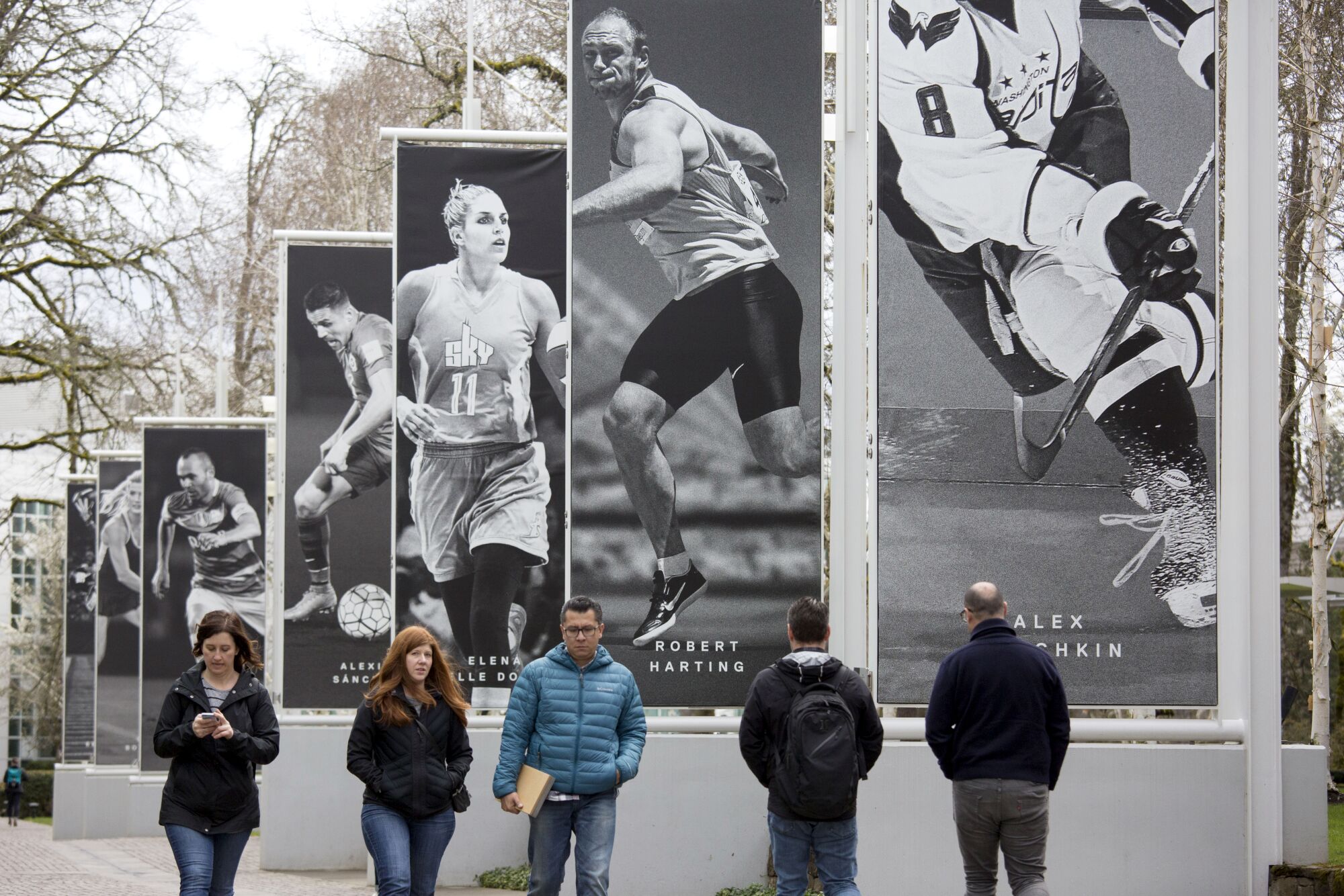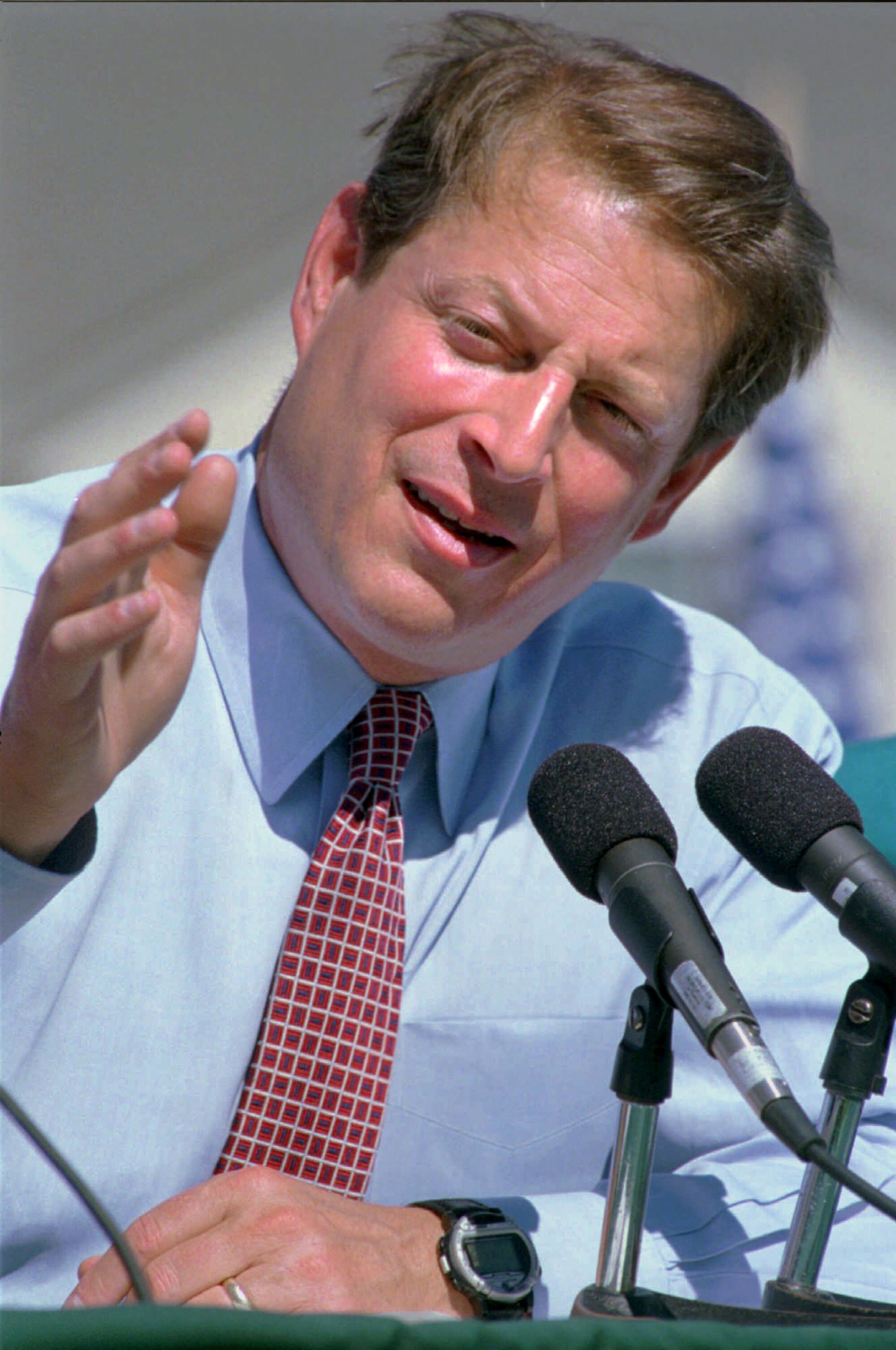BEAVERTON, Ore. —
Karen and Steve Packer were done with California.
The crowds, the traffic. It came to a head around Labor Day more than a generation ago, on a weekend getaway to Twentynine Palms. Around midnight, the couple’s quiet was invaded by a rowdy group of motorcyclists who pulled in near their campsite, music blasting.
The Packers began job hunting, which led them from Irvine to the growing tech industry just outside Portland. For the two natives of the Northwest, the move to Oregon felt like going home.
It also put the couple on the leading edge of political change.
Washington County, where the two landed, used to be agricultural and solidly Republican. Today, fields that once sprouted wheat and barley are home to sprawling corporate campuses, acres of upscale subdivisions and an influx of Democrats like the Packers, who arrived in Beaverton in the early 1980s and helped turn Oregon into one of the country’s most reliably blue states.
For much of its history, the West was Republican ground. Today, it’s a bastion of Democratic support, a shift that has transformed presidential politics nationwide. Mark Z. Barabak will explore the forces that remade the political map in a series of columns called “The New West.”
In 2020, Joe Biden carried Oregon by 17 points, extending a string of double-digit Democratic presidential victories that started in 2008. He won Washington County with nearly 66% of the vote.
The change is part of a much larger political shift.
Over the last two decades, the West has gone from a Republican stronghold — the ancestral home of Barry Goldwater, Ronald Reagan, the anti-federal Sagebrush Rebellion — into a bastion of Democratic support.
The transformation has remade the nation’s political map and reshaped the fight for the White House, helping Democrats win three of the last four presidential elections and offsetting the drift of certain states — Florida, Missouri, Iowa among them — toward the GOP.
“It’s given us a new path to a majority,” said Simon Rosenberg, a Democratic strategist whose work building support among Latinos and young voters helped bring about the realignment.
In this series, called “The New West,” I’m exploring the factors behind that change. Some of these circumstances have been seen throughout the region, from the Pacific Coast across the desert Southwest and into the Rocky Mountains.
The hard-right turn of the Republican Party, especially on social issues such as abortion, alienated many adherents of the West’s live-and-let-live ethos. The rise of Donald Trump sapped the GOP’s backing among suburban, female and independent voters. The growing Latino population and its increased political engagement lifted Democrats at the ballot box.
In Oregon, economics also played a significant role, as the state’s historical reliance on extractive industries — chief among them logging — dwindled and high-tech boomed.
Physical fitness, the state’s secular religion, and the lure of forest, mountain and stream spawned thriving industries, as business leaders and entrepreneurs came to see Oregon’s abundant wilds as a place to play rather than just make a living.
“Employment patterns have political consequences,” said Bill Lunch, an emeritus political science professor at Oregon State, and those patterns have solidified Oregon’s blue hue.

Nike, headquartered in Beaverton, is part of a thriving industry based on physical fitness and a love of Oregon’s great outdoors.
(Natalie Behring / Getty Images)
The combination of natural beauty and businesses like giant chipmaker Intel, Nike and Columbia Sportswear have drawn a certain kind of migrant to Oregon: well-educated, environmentally conscious and Democratic-leaning.
Bend, once a played-out timber town, is now a burgeoning mecca of outdoor sports. It has become one of the country’s fastest-growing cities and a magnet for active retirees — and Democrats — like Bryan Eichhorn, 61, an ardent skier and mountain biker.
“I still think Biden is fantastic,” said the former University of Maryland chemistry professor, who — despite concern about the president’s age —plans to dig out his 2020 campaign sign and plant it back in his frontyard.

As recently as 2004, Oregon was seen as a presidential swing state.
Four years earlier, Democrat Al Gore squeaked past Republican George W. Bush here by just 0.4%, or fewer than 7,000 votes out of more than 1.5 million cast. (Bush was helped by the presence of Ralph Nader, whose 5% Green Party showing was one of his best in the country.)

Democrat Al Gore, making a vice presidential appearance in Hillsboro in 1998, barely edged Republican George W. Bush in Oregon’s 2000 presidential election.
(Greg Wahl-Stephens / Associated Press)
Alarmed, Democratic forces spent the next several years signing up tens of thousands of supporters, laying the groundwork for a sophisticated registration and get-out-the-vote operation that is still running today.
“We were going anywhere we could find a bunch of relatively progressive folks,” recalled Kevin Looper, who led the effort funded by organized labor and the left-leaning billionaire George Soros. “We were raising a flag and holding a pen” so apathetic or infrequent voters could register — then be prodded to drop their ballots in the mail.
(In 2000, Oregon became the first state in the country to allow voting by mail in presidential contests, a system that greatly enhanced efforts to target and track voters.)
At the same time, the image of the GOP was changing.
Oregon has a long history of moderate Republicanism, a hand-me-down from those New England settlers who brought place names like Salem and Portland. For decades, politicians like Tom McCall, Mark Hatfield and Bob Packwood embodied that Yankee Republican sensibility. They were fiscally prudent, environmentally sensitive and not terribly focused on social issues.
“Employment patterns have political consequences.”
— Bill Lunch, emeritus political science professor at Oregon State University
But just as the national party grew more socially conservative and religiously oriented, the Oregon GOP veered sharply away from the center.
The 1990 election was pivotal.
The Republican nominee for governor was Dave Frohnmayer, the state’s moderate attorney general, who lost in good part because an antiabortion independent, Al Mobley, cut deeply into his support. Though Mobley was little more than a spoiler, his campaign signaled the direction the GOP was headed.
In the same election, voters narrowly passed a measure that fundamentally changed Oregon’s property tax and public school systems. School funding largely shifted from the local to the state level, helping Democrats politically as the party came to be seen as more supportive of teachers and education, a key to the growing high-tech economy.
Education had been a big part of Bush’s appeal in the 2000 presidential contest, when he promised to dramatically boost federal spending to improve schools nationwide.
“He was running as a different kind of Republican,” said Dan Lavey, a political strategist who worked that year on Bush’s Oregon campaign. After Sept. 11, Lavey noted, Bush’s emphasis shifted: “Winning a war on terror replaced winning a war on closing the achievement gap.”

Then-Texas Gov. George W. Bush, campaigning at an elementary school in Beaverton, made education a focus of his 2000 presidential campaign. But 9/11 would make the war on terrorism his priority in office, alienating some who had voted for him.
(Tannen Maury /AFP via Getty Images)
The invasion of Iraq, undertaken after the terrorist attacks, soured many on the Republican president.
It drew Karen and Steve Packer, the couple who had moved from Irvine, off the political sidelines.
The Packers, now in their 70s and living in Washington County’s wine country, had worked for Eugene McCarthy’s anti-Vietnam War campaign and for Democratic presidential nominee George McGovern. But they hadn’t been politically active for a long time. Unhappy with Bush, they started attending Democratic Party meetings.
The gatherings were small, maybe 30 or so people.
“What I call the latent grassroots activists weren’t doing much,” Karen Packer said. But attendance grew as more Democrats realized they weren’t alone.
Packer, whose background was in marketing and public relations, eventually became the party’s county chair. Her husband used his programming skills to build a local outreach and get-out-the-vote operation.
In 2004, Democrat John F. Kerry beat Bush in Oregon, 51% to 47%, carrying Washington County by a slightly bigger margin.
That was the last time a presidential election in the state was remotely close.

Like elsewhere, the political split in Oregon is largely an urban-rural divide.
That’s been a boon for Democrats as cities and suburbs swell and rural communities — a stronghold of Republican support — steadily shrink.
In 1990, about the time tech jobs in the state surpassed jobs in the forest industry, roughly 3 in 10 residents lived in rural Oregon. Today, that number is around 2 in 10.
“The problem is, for Republicans, it doesn’t do a lot of good to take your vote from 70% to 75% in counties that have 3,000 votes when you’re going from 50% to 35% in counties that have 400,000 votes,” said Tim Hibbitts, a retired pollster who spent decades sampling public opinion in Oregon.
Bend, once a reliable Republican outpost, shows how economic change has eroded GOP support even in the state’s rural reaches.

The Deschutes River is the scenic heart of Bend. The former timber town used to be a GOP outpost, but today the growing city’s registered Democrats outnumber Republicans.
(George Rose / Getty Images)
The former lumber town, a hop east from the Cascade Mountains, is a model of successful reinvention.
An old mill on the Deschutes River is now an REI store, which anchors a thriving shopping and entertainment district. The river, once choked with timber, is filled with paddle boarders, surfers (riding artificially created waves) and families and friends enjoying a scenic float.
The population has quadrupled since the early 1990s to more than 100,000, with many newcomers arriving in recent years from blue California — so it’s no surprise that in 2020, Biden became the first Democratic candidate to win more than 50% of the presidential vote in Deschutes County, Bend’s home, since Lyndon Johnson.
One Biden voter was Ed Murrer, a semiretired business consultant, who moved from Northern California to Bend in 2017, partly to indulge more often in the hiking, biking, skiing and fishing that he loves.
Although politically unaffiliated, Murrer, 73, tends to lean more Democratic than Republican.
He can’t stand Trump — “one of the most despicable people I ever knew about” — and has no use for Florida Gov. Ron DeSantis, who runs second to Trump in Republican preference polls for 2024. “A guy who’s banning books,” Murrer scoffed. “His values are not my values.”
Murrer is not particularly wild about Biden and would love to see a Republican like Adam Kinzinger, the former Illinois congressman who has taken on GOP extremists, carry the party’s standard in 2024. But that’s hard to imagine, and if the nominee is Trump or DeSantis, Murrer will support Biden’s reelection — as a way, he said, to preserve democracy.
And thus, once more, help color this woodsy slice of the West a definitive shade of blue.


